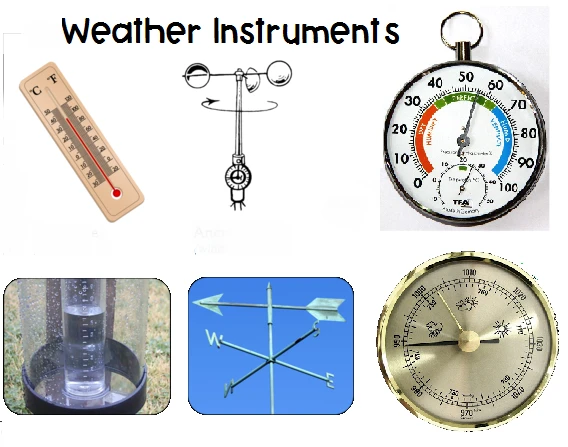
# The Instruments of the Weather
## Understanding Weather Measurement Tools
Weather plays a crucial role in our daily lives, and understanding it requires specialized instruments. Meteorologists use various tools to measure different atmospheric conditions, helping us predict and prepare for changing weather patterns.
### Thermometers: Measuring Temperature
The most basic weather instrument is the thermometer, which measures air temperature. Modern digital thermometers provide accurate readings, while traditional mercury thermometers are still used in some applications. Temperature measurements help determine appropriate clothing, heating needs, and even predict severe weather events.
### Barometers: Tracking Atmospheric Pressure
Barometers measure atmospheric pressure, which is crucial for weather forecasting. A falling barometer often indicates approaching storms, while rising pressure suggests fair weather. There are two main types:
– Mercury barometers
– Aneroid barometers
### Anemometers: Gauging Wind Speed
Wind measurement is essential for aviation, sailing, and weather prediction. Anemometers come in various designs:
– Cup anemometers (most common)
– Vane anemometers
– Hot-wire anemometers
– Ultrasonic anemometers
These instruments help determine wind speed and sometimes direction, providing valuable data for weather forecasts and wind energy projects.
### Rain Gauges: Measuring Precipitation
Precipitation measurement is vital for agriculture, water resource management, and flood prediction. Rain gauges collect and measure liquid precipitation over a set period. The most common types include:
– Standard rain gauge
– Tipping bucket rain gauge
– Weighing precipitation gauge
### Hygrometers: Determining Humidity
Humidity affects human comfort, agriculture, and weather patterns. Hygrometers measure the amount of water vapor in the air. Modern electronic hygrometers provide quick and accurate readings, while traditional hair tension hygrometers are still used in some applications.
## Advanced Weather Instruments
Beyond these basic tools, meteorologists use sophisticated equipment for comprehensive weather analysis:
### Weather Balloons and Radiosondes
These instruments are launched into the atmosphere to collect data about temperature, humidity, pressure, and wind at various altitudes. The information helps create upper-air weather maps and improve forecast accuracy.
### Weather Satellites
Orbiting satellites provide global coverage of weather patterns, cloud formations, and storm development. They’re essential for tracking hurricanes, monitoring climate change, and providing early warnings for severe weather.
### Doppler Radar
This advanced radar system detects precipitation, measures its motion, and estimates its type (rain, snow, hail). Doppler radar is particularly valuable for detecting rotation in thunderstorms that might lead to tornadoes.
## The Importance of Weather Instruments
These tools collectively form our weather observation network, providing data that:
– Improves forecast accuracy
– Enhances severe weather warnings
– Supports climate research
– Aids in agricultural planning
– Assists in transportation safety
Understanding these instruments helps us appreciate the science behind weather forecasting and the technology that keeps us informed about atmospheric conditions. As technology advances, weather instruments continue to become more precise, helping us better understand and predict our ever-changing weather patterns.
Keyword: instruments of the weather
